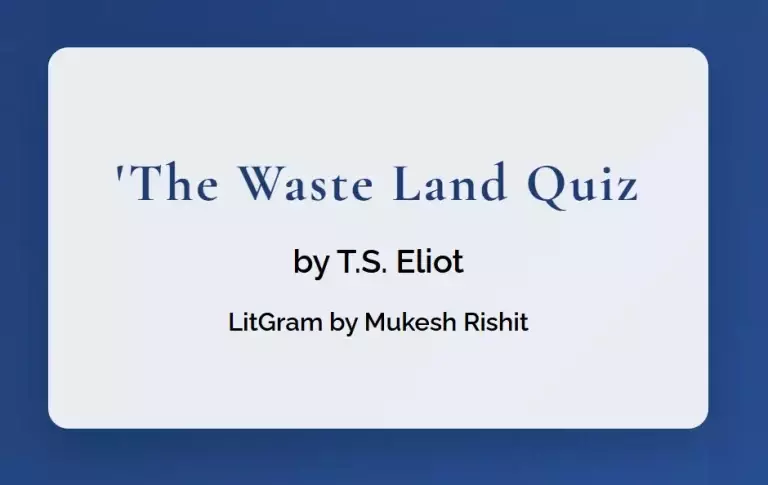The Waste Land Quiz
Embark on a literary journey through the haunting landscapes of T.S. Eliot’s modernist masterpiece, “The Waste Land,” with our in-depth quiz. Perfect for students, literature enthusiasts, and anyone preparing for advanced English exams, this quiz challenges your understanding of one of the 20th century’s most influential poems.
Dive deep into Eliot’s fragmented narrative, exploring:
• The five distinct sections of “The Waste Land”
• Eliot’s innovative use of multiple voices and perspectives
• The rich tapestry of literary and cultural allusions
• Key symbols and their significance within the poem
• Themes of disillusionment, spiritual drought, and cultural decay
Whether you’re a seasoned Eliot scholar or encountering “The Waste Land” for the first time, our quiz offers a rigorous test of your knowledge. Unravel the complexities of Eliot’s vision, from the cruel breeding of lilacs in April to the final, thunderous “Shantih shantih shantih.”
Enhance your analytical skills, refresh your memory of pivotal passages, and gain new insights into this cornerstone of modernist poetry. Challenge yourself with our “The Waste Land” quiz and emerge with a deeper appreciation of Eliot’s enduring legacy in English literature.
Perfect for:
• Students studying modernist poetry
• Literature lovers seeking to test their knowledge
• Teachers preparing lesson plans on T.S. Eliot
• Anyone fascinated by the complexities of “The Waste Land”
Don’t let this opportunity to sharpen your literary acumen go to waste. Dive into our “The Waste Land” quiz now and experience Eliot’s poetic genius anew!



2 Comments
mukeshbishnoi848@gmail.com
Pingback: Burnt Norton: A Comprehensive Guide to T.S. Eliot's Masterpiece LitGram by MukeshRishit